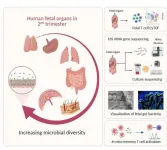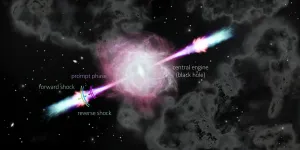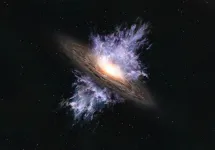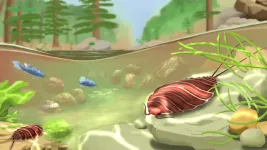The team profiled microbes across fetal organs using 16S-rRNA gene sequencing and detected low but consistent microbial signal in fetal gut, skin, placenta and lungs, in the second trimester of gestation. They identified several live bacterial strains including Staphylococcus and Lactobacillus in fetal tissues, which induced in vitro activation of memory T-cells in fetal mesenteric lymph-node, supporting the role of microbial exposure in fetal immune-priming. Finally, using scanning electron microscope (SEM) and Ribonucleic acid (RNA) in situ hybridisation (RNA-ISH), discrete localisation of bacteria-like structures and eubacterial-RNA were visualised within the 14th week fetal gut lumen. These findings indicate selective presence of live microbes in fetal organs during second trimester of gestation and have broader implications on the establishment of immune competency and priming before birth.
The findings demonstrate that healthy human fetal tissues (in the second trimester of gestation) contain effector memory T-cells, a sparse biomass of bacteria and an active memory T-cell response towards fetal bacteria. It also demonstrates direct spatial localisation of bacterial entities, localised within the lumen of developing fetal gut, during second trimester of gestation.
Dr Florent Ginhoux, Senior Principal Investigator, SIgN and co-last author of the study said, "Our study demonstrates that such microbial presence primes the fetal immune system, thereby putting early microbial memory in the context of fetal immune priming, a concept not explored before in fetal immunity. It will be interesting to explore the precise nature of these microbial antigen-specific circulatory and immune cells that reside in human fetal organ tissues, and their potential role in imparting selective defence against pathogenic microbes in neonatal and adult life. Taken together, these findings have wider implications in understanding the key factors involved in fetal immune system development and priming in utero, which may set the basis for life-long human health and immunity of the organism."
INFORMATION:
Co-last author of the study, Professor Jerry Chan, Senior Consultant, Department of Reproductive Medicine, KK Women's and Children's Hospital (KKH), and Senior National Medical Research Council Clinician Scientist said, "This study shows us that the vertical transmission of microbial organisms from mother to child through a yet unknown mechanism may have important implications in imparting influences such as immune education or priming to the baby in both immunity (including auto-immunity) and tolerance in later life. From a clinical standpoint, this finding adds to our understanding of how the fetus or newborn may respond to infections or intrauterine stem cell transplantation."
Co-senior author of the study, Professor Salvatore Albani, Director of the SingHealth Duke-NUS Translational Immunology Institute and Professor of Medicine at Duke-NUS said, "This study is a paramount example of a multidisciplinary, truly translational approach to improve our understanding of how our immune system develops and relates to the environment. It shatters the notion of the fetus living in an isolated, privileged immune environment and emphasises the importance of the maternal-fetal interface in the context of environmental challenges and experiences. The research approach taken relies on high dimensionality techniques which enable the depiction and the dissection of the fetal Immunome systematically. This research bears important immediate translational implications as it will affect current and future approaches to manipulation of the immune system in prenatal and perinatal age."
Co-last author of the study, Naomi McGovern, PhD, Department of Pathology, University of Cambridge, UK, said: "This study provides valuable insight into fetal immunology and demonstrates that complex immune priming events occur during gestation. It shows that fetal dendritic cells are sensitive to diverse signaling cues and can initiate appropriate responses that are required for healthy fetal development. "
More information on the study, "Microbial exposure during early human development primes fetal immune cells" can be found via the team's published paper in Cell: https://doi.org/10.1016/j.cell.2021.04.039
About the Agency for Science, Technology and Research (A*STAR)
The Agency for Science, Technology and Research (A*STAR) is Singapore's lead public sector R&D agency. Through open innovation, we collaborate with our partners in both the public and private sectors to benefit the economy and society. As a Science and Technology Organisation, A*STAR bridges the gap between academia and industry. Our research creates economic growth and jobs for Singapore, and enhances lives by improving societal outcomes in healthcare, urban living, and sustainability. A*STAR plays a key role in nurturing scientific talent and leaders for the wider research community and industry. A*STAR's R&D activities span biomedical sciences to physical sciences and engineering, with research entities primarily located in Biopolis and Fusionopolis. For ongoing news, visit http://www.a-star.edu.sg.
About KK Women's and Children's Hospital
KK Women's and Children's Hospital (KKH) is Singapore's largest tertiary referral centre for Obstetrics, Gynaecology, Paediatrics and Neonatology. Founded in 1858, the academic medical institution specialises in the management of high-risk conditions in women and children. A team of about 500 specialists adopt a compassionate, multi-disciplinary and holistic approach to treatment, and harness medical innovations and technology to deliver the best medical care possible.
As an Academic Medical Centre, KKH is a major teaching hospital for all three medical schools in Singapore, Duke-NUS Medical School, Yong Loo Lin School of Medicine and Lee Kong Chian School of Medicine. The 830-bed hospital also runs the largest specialist training programme for Obstetrics and Gynaecology and Paediatrics in the country. Both programmes are accredited by the Accreditation Council for Graduate Medical Education International (ACGME-I), and are highly rated for the high quality of clinical teaching and the commitment to translational research.
For more information, please visit http://www.kkh.com.sg.
About SingHealth Duke-NUS Academic Medical Centre
About Singapore Health Services (SingHealth)
SingHealth, Singapore's largest public healthcare cluster, is committed to providing affordable, accessible and quality healthcare to patients. With a network of acute hospitals, national specialty centres, polyclinics and community hospitals offering over 40 clinical specialties, it delivers comprehensive, multi-disciplinary and integrated care. Beyond tertiary and specialist care, SingHealth partners community care providers to enable patients to receive the right care at their homes. As part of the SingHealth Duke-NUS Academic Medical Centre, SingHealth also focuses on advancing education and research to continuously improve care outcomes for patients. For more information, please visit: http://www.singhealth.com.sg
Members of the SingHealth group
Hospitals (Tertiary Specialty Care):
Singapore General Hospital, Changi General Hospital, Sengkang General Hospital, KK Women's and Children's Hospital
National Specialty Centres (Tertiary Specialty Care):
National Cancer Centre Singapore, National Dental Centre Singapore, National Heart Centre Singapore, National Neuroscience Institute, and Singapore National Eye Centre
SingHealth Polyclinics (Primary Care):
Bedok, Bukit Merah, Marine Parade, Outram, Pasir Ris, Punggol, Sengkang, Tampines, Eunos (expected completion: 2020) and Tampines North (expected completion: 2022)
SingHealth Community Hospitals (Intermediate and Long-term Care):
Bright Vision Hospital, Sengkang Community Hospital, and Outram Community Hospital
About Duke-NUS Medical School
Duke-NUS is Singapore's flagship graduate entry medical school, established in 2005 with a strategic, government-led partnership between two world-class institutions: Duke University School of Medicine and the National University of Singapore (NUS). Through an innovative curriculum, students at Duke-NUS are nurtured to become multi-faceted 'Clinicians Plus' poised to steer the healthcare and biomedical ecosystem in Singapore and beyond. A leader in ground-breaking research and translational innovation, Duke-NUS has gained international renown through its five signature research programmes and nine centres. The enduring impact of its discoveries is amplified by its successful Academic Medicine partnership with Singapore Health Services (SingHealth), Singapore's largest healthcare group. This strategic alliance has spawned 15 Academic Clinical Programmes, which harness multi-disciplinary research and education to transform medicine and improve lives.
For more information, please visit http://www.duke-nus.edu.sg
About the University of Cambridge
The mission of the University of Cambridge is to contribute to society through the pursuit of education, learning and research at the highest international levels of excellence. To date, 110 affiliates of the University have won the Nobel Prize.
Founded in 1209, the University comprises 31 autonomous Colleges, which admit undergraduates and provide small-group tuition, and 150 departments, faculties and institutions. Cambridge is a global university. Its 19,000 student body includes 3,700 international students from 120 countries. Cambridge researchers collaborate with colleagues worldwide, and the University has established larger-scale partnerships in Asia, Africa and America.
The University sits at the heart of the 'Cambridge cluster', which employs 60,000 people and has in excess of £12 billion in turnover generated annually by the 4,700 knowledge-intensive firms in and around the city. The city publishes 341 patents per 100,000 residents.
http://www.cam.ac.uk






